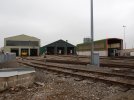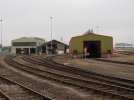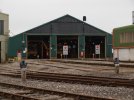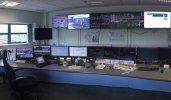Dave W
Member
Hi there,
I'm planning to model a TMD which would be notionally at one end of a yard - although as this is a question about signalling rather than anything to do with the modelling itself I've put it in I&S. I have a basic understanding of signalling but not much more than that. I'd like to represent a combination of signals (working!) and stop boards, but the iteration I've got to so far doesn't feel satisfactory.
Firstly, could I ask someone in the know to kindly offer their understanding on the principles of using stop boards, and secondly to answer a couple of specific questions:
I'm planning to model a TMD which would be notionally at one end of a yard - although as this is a question about signalling rather than anything to do with the modelling itself I've put it in I&S. I have a basic understanding of signalling but not much more than that. I'd like to represent a combination of signals (working!) and stop boards, but the iteration I've got to so far doesn't feel satisfactory.
Firstly, could I ask someone in the know to kindly offer their understanding on the principles of using stop boards, and secondly to answer a couple of specific questions:
- Can stop boards be used to protect otherwise signalled areas (for example at the exit of a depot), or would this always be a lit signal?
- Where a stop board says "stop and telephone" - who does the driver telephone? I presume the signaller, but what format does this conversation then take?





